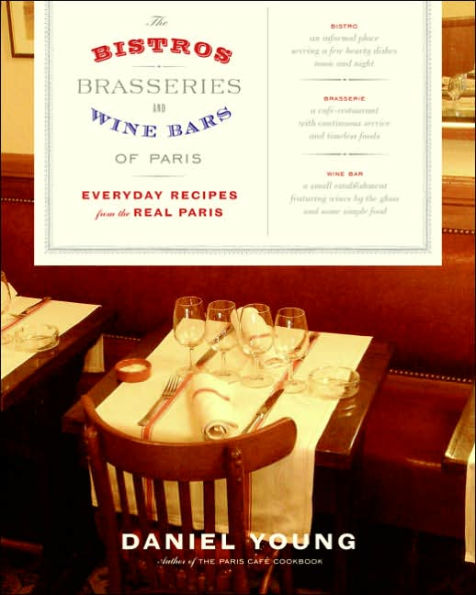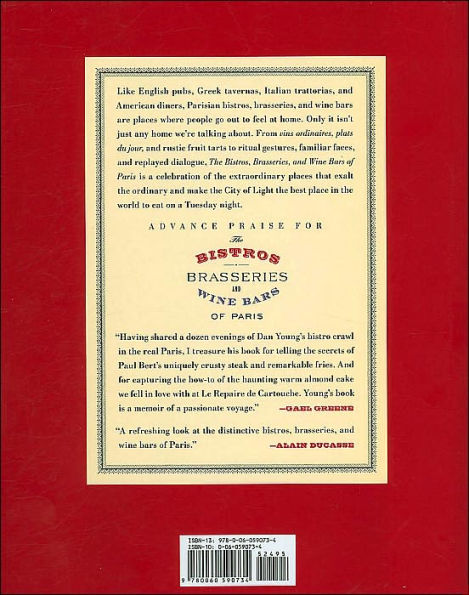You can spend years in Paris and never hear the same answer twice to this cookbook's underlying question: what is the difference between a bistro, a brasserie, and a wine bar? In his third cookbook, acclaimed author and expert on all things French Daniel Young explains the nuances between the three, as he takes home cooks on a vibrant, spirited tour of Paris's best eateries.
Daniel explains that, as true Parisians know; a bistro is a small, informal restaurant serving a few simple, hearty dishes, while a brasserie is a larger, cafe–restaurant providing continuous service and rough–and–ready food. In a wine bar, expect to find a large selection of wines by the glass and light bites to go with them.
Daniel also introduces home cooks to many of his favorite spots (some are famous, others are his own best–keep secrets) and presents classic recipes from each, including Salmon Terrine with Leeks and Pesto, Cream of Carrot Soup with Cumin, Pan–Grilled Rib Steak with Béarnaise Sauce, and Warm Almond Cake with Caramel Cream. Bistros, brasseries, and wine bars, define what it means to be out and eat out in Paris, to dine simply and very well. Theirs is the food that nourishes and sustains the Paris of Parisians – the real and everyday Paris – with local flavor, style, sophistication, personality, and attitude.
You can spend years in Paris and never hear the same answer twice to this cookbook's underlying question: what is the difference between a bistro, a brasserie, and a wine bar? In his third cookbook, acclaimed author and expert on all things French Daniel Young explains the nuances between the three, as he takes home cooks on a vibrant, spirited tour of Paris's best eateries.
Daniel explains that, as true Parisians know; a bistro is a small, informal restaurant serving a few simple, hearty dishes, while a brasserie is a larger, cafe–restaurant providing continuous service and rough–and–ready food. In a wine bar, expect to find a large selection of wines by the glass and light bites to go with them.
Daniel also introduces home cooks to many of his favorite spots (some are famous, others are his own best–keep secrets) and presents classic recipes from each, including Salmon Terrine with Leeks and Pesto, Cream of Carrot Soup with Cumin, Pan–Grilled Rib Steak with Béarnaise Sauce, and Warm Almond Cake with Caramel Cream. Bistros, brasseries, and wine bars, define what it means to be out and eat out in Paris, to dine simply and very well. Theirs is the food that nourishes and sustains the Paris of Parisians – the real and everyday Paris – with local flavor, style, sophistication, personality, and attitude.

Bistros, Brasseries, and Wine Bars of Paris: Everyday Recipes from the Real Paris
224
Bistros, Brasseries, and Wine Bars of Paris: Everyday Recipes from the Real Paris
224Hardcover
Related collections and offers

Product Details
| ISBN-13: | 9780060590734 |
|---|---|
| Publisher: | HarperCollins Publishers |
| Publication date: | 01/31/2006 |
| Pages: | 224 |
| Product dimensions: | 7.37(w) x 9.12(h) x 0.86(d) |



